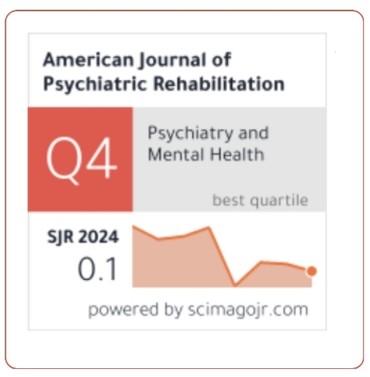AI-Powered Diagnosis of Mood and Psychotic Disorders: A Systematic Review and Meta-Transfer Learning Framework
Keywords:
Mood and Psychotic Disorders (MPD), Artificial Intelligence (AI), Meta-Transfer Learning (MetaTrans), Machine Learning (ML), Deep Learning (DL), MRI-Based Diagnosis, Rare Disorders, Mental Health AI, Transfer Learning (TL), Automated Psychiatric DiagnosisAbstract
Mood and psychotic disorders significantly impact global mental health, presenting challenges in accurate diagnosis and effective treatment. Among these, conditions such as bipolar disorder, schizophrenia, and schizoaffective disorder remain difficult to detect due to overlapping symptoms, data scarcity, and the lack of robust diagnostic models. Artificial intelligence (AI), particularly machine learning (ML) and deep learning (DL), has shown potential in bridging diagnostic gaps. However, existing AI models often face issues such as small sample sizes, class imbalances, and difficulty in generalizing findings across diverse populations.
This paper presents a systematic review (2018–2024) on the use of ML, DL, and meta-learning (MtL) in diagnosing mood and psychotic disorders (MPD). It highlights existing research gaps and proposes an innovative MRI-based Meta-Transfer Learning (MetaTrans) framework. This framework integrates transfer learning (TL) for common psychiatric conditions with meta-learning strategies to improve adaptability for underrepresented psychotic disorders. The proposed approach aims to enhance diagnostic accuracy, improve generalizability, and facilitate early detection of complex psychiatric disorders. Additionally, the study examines these developments in the context of India’s healthcare system, addressing critical challenges in AI-driven psychiatric diagnostics.
References
1. Abaei N, Osman H (2020) A Hybrid Model for Bipolar Disorder Classification from Visual Information. In ICASSP 2020:4107–4111
2. Abeliovich A, Gitler AD (2016) Defects in trafficking bridge Parkinson’s disease pathology and genetics. Nature 539(7628):207–216
3. Aslan Z, Akin M (2022) A deep learning approach in automated detection of schizophrenia using scalogram images of EEG signals. Physical and Engineering Sciences in Medicine 45(1):83–96
4. Bayes A, Spoelma MJ, Hadzi-Pavlovic D, et al (2021) Differentiation of bipolar dis- order versus borderline personality disorder: A machine learning approach. Journal of Affective Disorders 288:68–73
5. Berk M, Berk L, Dodd S, et al (2014) Stage managing bipolar disorder. Bipolar disorders 16(5):471–477
6. Bracher-Smith M, Menzies G, Kendall K, et al (2019) F29investigating supervised machine learning methods for prediction of schizophrenia in uk biobank. European Neuropsychopharmacology 29:1125–1125
7. Cao S, Wang W, Zhang J, et al (2022) A few-shot fine-grained image classification method leveraging global and local structures. International Journal of Machine Learning and Cybernetics 13(8):2273–2281
8. Cotrena C, Branco LD, Kochhann R, et al (2016) Quality of life, functioning and cog- nition in bipolar disorder and major depression: a latent profile analysis. Psychiatry research 241:289–296
9. Dome P, Rihmer Z, Gonda X (2019) Suicide risk in bipolar disorder: a brief review. Medicina 55(8):403–403
10. Dong MS, Rokicki J, Dwyer D (2016) Multimodal workflows optimally predict response to repetitive transcranial magnetic stimulation in patients with schizophre- nia: a multisite machine learning analysis. Transl Psychiatry 14(7628):197–206
11. Dong R, Stefan G, Horrocks J, et al (2019) Investigating the association between anxiety symptoms and mood disorder in high-risk offspring of bipolar parents: a comparison of Joint and Cox models. International Journal of Bipolar Disorders 7:1–8
12. Duffy A, Goodday S, Keown-Stoneman C, et al (2019) The emergent course of bipo- lar disorder: observations over two decades from the Canadian high-risk offspring cohort. American Journal of Psychiatry 176(9):720–729
13. Fabro L, Bondi E, Serio F, et al (2023) Machine learning methods to predict outcomes of pharmacological treatment in psychosis. Translational Psychiatry 13(1)
14. Felice AD, Ricceri L, Venerosi A, et al (2015) Multifactorial origin of neurode- velopmental disorders: approaches to understanding complex etiologies. Toxics 3(1):89–129
15. Fernandes BS, Karmakar C, Tamouza R, et al (2020) Precision psychiatry with immunological and cognitive biomarkers: a multi-domain prediction for the diag- nosis of bipolar disorder or schizophrenia using machine learning. Translational psychiatry 10(1):162–162
16. Fusar-Poli P, Papanastasiou E, Stahl D, et al (2015) Treatments of negative symp- toms in schizophrenia: meta-analysis of 168 randomized placebo-controlled trials. Schizophrenia bulletin 41(4):892–899
17. Gao X, Wang Y, Cheng J, et al (2021) Meta-learning based relation and rep- resentation learning networks for single-image deraining. Pattern Recognition 120:108124–108124
18. Graves A, Schmidhuber J (2005) Framewise phoneme classification with bidirectional LSTM and other neural network architectures. Neural networks 18(5-6):602–610
19. Gupta A, Malhotra D (2023) AI-Based Techniques for the Detection of Neuro- Developmental Disorders: A Survey. 2023 6th International Conference on Informa- tion Systems and Computer Networks, ISCON 2023
20. Gupta A, Malhotra D, Tanwar S, et al (2024) Artificial Intelligence and Machine Learn- ing in Autism Detection: From Common to Rare Disorders. In: Proceedings of Fifth International Conference on Computing, Communications, and Cyber-Security. IC4S 2023, vol 991. Springer
21. Hansen PS, Laursen MF, Grøntved S, et al (2019) Increasing mortality gap for patients diagnosed with bipolar disorder-a nationwide study with 20 years of follow-up. Bipolar disorders 21(3):270–275
22. Johannesen JK, Bi J, Jiang R, et al (2016) Machine learning identification of EEG fea- tures predicting working memory performance in schizophrenia and healthy adults. Neuropsychiatr Electrophysiol 2(1)
23. Kahn RS, Rossum IWV, Leucht S, et al (2018) Amisulpride and olanzapine followed by open-label treatment with clozapine in first-episode schizophrenia and schizophreni- form disorder (OPTiMiSE): a three-phase switching study. The Lancet Psychiatry 5(10):797–807
24. Kamnitsas K, Ledig C, Newcombe VF, et al (2017) Efficient multi-scale 3D CNN with fully connected CRF for accurate brain lesion segmentation. Medical image analysis 36:61–78
25. Karrer TM, Bassett DS, Derntl B, et al (2019) Brain-based ranking of cognitive domains to predict schizophrenia. Human brain mapping 40(15):4487–4507
26. Karthik S, Sudha M (2021) Predicting bipolar disorder and schizophrenia based on non-overlapping genetic phenotypes using deep neural network. Evolutionary Intelligence 14:619–634
27. Kesby JP, Eyles DW, Mcgrath JJ, et al (2018) Dopamine, psychosis and schizophrenia: the widening gap between basic and clinical neuroscience. Translational psychiatry 8(1):30–30
28. Kim JW, Lee YS, Han DH, et al (2015a) Diagnostic utility of quantitative EEG in un-medicated schizophrenia. Neurosci Lett 589:126–131
29. Kim JW, Lee YS, Han DH, et al (2015b) Diagnostic utility of quantitative EEG in un-medicated schizophrenia. Neurosci Lett 589:126–131
30. Li H, Cui L, Cao L, et al (2020) Identification of bipolar disorder using a combination of multimodality magnetic resonance imaging and machine learning techniques. BMC psychiatry 20(1):1–12
31. Li Z, Li W, Wei Y, et al (2021) Deep learning based automatic diagnosis of first-episode psychosis, bipolar disorder and healthy controls. Computerized Medical Imaging and Graphics 89:101882–101882
32. Lin E, Lin CH, Lai YL, et al (2018) Combination of G72 genetic variation and G72 protein level to detect schizophrenia: machine learning approaches. Frontiers in Psychiatry 9:566–566
33. Lin E, Lin CH, Lane HY (2020) Precision psychiatry applications with pharmacoge- nomics: artificial intelligence and machine learning approaches. International journal of molecular sciences 21(3):969–969
34. Ma P, Zhang Z, Wang J, et al (2021) Review on the application of metalearning in artificial intelligence. Computational intelligence and neuroscience
35. Malhi GS, Bell E (2020) Prepubertal bipolar disorder: a diagnostic quandary. International journal of bipolar disorders 8(1):20–20
36. Malone JP (2012) The systems theory of autistogenesis: putting the pieces together. Sage Open 2(2):2158244012444281–2158244012444281
37. Marrie RA, Walld R, Bolton JM, et al (2017) CIHR Team in Defining the Burden and Managing the Effects of Psychiatric Comorbidity in Chronic Immunoinflam- matory Disease. Increased incidence of psychiatric disorders in immune-mediated inflammatory disease. J Psychosom Res 101:17–23
38. Mccutcheon RA, Marques TR, Howes OD (2020) Schizophrenia-an overview. JAMA psychiatry 77(2):201–210
39. Muneer A (2016) Staging models in bipolar disorder: a systematic review of the literature. Clinical Psychopharmacology and Neuroscience 14(2):117–117
40. Navarro-Mateu F, Alonso J, Lim CC, et al (2017a) The association between psychotic experiences and disability: results from the WHO World Mental Health Surveys. Acta Psychiatrica Scandinavica 136(1):74–84
41. Navarro-Mateu F, Alonso J, Lim CC, et al (2017b) The association between psychotic experiences and disability: results from the WHO World Mental Health Surveys. Acta Psychiatrica Scandinavica 136(1):74–84
42. Nguyen D (2024) Ensemble learning using traditional machine learning and deep neural network for diagnosis of Alzheimer’s disease. IBRO Neurosci Rep 13:255–263
43. Nielsen RE, Levander S, Tell´eus GK, et al (2015) Second-generation antipsychotic effect on cognition in patients with schizophrenia-a meta-analysis of randomized clinical trials. Acta Psychiatrica Scandinavica 131(3):185–196
44. Passos IC, Ballester PL, Barros RC, et al (2019a) Machine learning and big data analytics in bipolar disorder: a position paper from the International Society for Bipolar Disorders Big Data Task Force. Bipolar Disorders 21(7):582–594
45. Passos IC, Ballester PL, Barros RC, et al (2019b) Machine learning and big data analytics in bipolar disorder: a position paper from the International Society for Bipolar Disorders Big Data Task Force. Bipolar Disorders 21(7):582–594
46. Paul T (2021) A Misdiagnosed Case of Schizoaffective Disorder With Bipolar Manifestations. Cureus 13(7)
47. Poletti S (2021) A peripheral inflammatory signature discriminates bipolar from unipo- lar depression: A machine learning approach. Prog Neuropsychopharmacol Biol Psychiatry 105:110136–110136
48. Rahmat R, Saednia K, Khani MRHH, et al (2020) Multi-scale segmentation in GBM treatment using diffusion tensor imaging. Computers in biology and medicine 123:103815–103815
49. Rasool M, Malik A, Qureshi MS, et al (2014) Recent updates in the treatment of neu- rodegenerative disorders using natural compounds. Evidence-Based Complementary and Alternative Medicine
50. Sadeghi D, Shoeibi A, Ghassemi N, et al (2022) An overview of artificial intelligence techniques for diagnosis of Schizophrenia based on magnetic resonance imaging modalities: Methods, challenges, and future works. Computers in Biology and Medicine 146:105554–105554
51. Salagre E, Dodd S, Aedo A, et al (2018) Toward precision psychiatry in bipolar disorder: staging 2.0. Frontiers in Psychiatry 9:641–641
52. Sartori JM, Reckziegel R, Passos IC, et al (2018a) Volumetric brain magnetic reso- nance imaging predicts functioning in bipolar disorder: a machine learning approach. Journal of psychiatric research 103:237–243
53. Sartori JM, Reckziegel R, Passos IC, et al (2018b) Volumetric brain magnetic reso- nance imaging predicts functioning in bipolar disorder: a machine learning approach. Journal of psychiatric research 103:237–243
54. Scaini G, Valvassori SS, Diaz AP, et al (2020) Neurobiology of bipolar disorders: a review of genetic components, signaling pathways, biochemical changes, and neuroimaging findings. Brazilian Journal of Psychiatry 42:536–551
55. Sonkurt HO, Altın¨oz AE, C¸ imen E, et al (2021)
56. Sun J, Li Y (2021) MetaSeg: A survey of meta-learning for image segmentation. Cognitive Robotics 1:83–91
57. Talpalaru A, Bhagwat N, Devenyi GA, et al (2019) Identifying schizophrenia sub- groups using clustering and supervised learning. Schizophrenia research 214:51–59
58. Thomas R, Sanders S, Doust J, et al (2015) Prevalence of attention- deficit/hyperactivity disorder: a systematic review and meta-analysis. Pediatrics 135(4):994–1001
59. Torrents-Barrena J, L´opez-Velazco R, Piella G, et al (2019)
60. Vancampfort D, Probst M, Scheewe T, et al (2012) The functional exercise capacity is correlated with global functioning in patients with schizophrenia. Acta Psychiatrica Scandinavica 125(5):382–387
61. Verma RK, Pandey M, Chawla P, et al (2022) An insight into the role of Artificial Intelligence in the early diagnosis of Alzheimer’s disease. CNS & Neurologi- cal Disorders-Drug Targets (Formerly Current Drug Targets-CNS & Neurological Disorders) 21(10):901–912
62. Wy TJP, Saadabadi A (2019)
63. Yatham LN, Kennedy SH, Parikh SV, et al (2018a) Canadian Network for Mood and Anxiety Treatments (CANMAT) and International Society for Bipolar Disor- ders (ISBD) 2018 guidelines for the management of patients with bipolar disorder. Bipolar disorders 20(2):97–170
64. Yatham LN, Kennedy SH, Parikh SV, et al (2018b) Canadian Network for Mood and Anxiety Treatments (CANMAT) and International Society for Bipolar Disor- ders (ISBD) 2018 guidelines for the management of patients with bipolar disorder. Bipolar disorders 20(2):97–170
65. Zarate CA, Tohen M, Land M, et al (2000) Functional impairment and cognition in bipolar disorder. Psychiatric Quarterly 71:309–329
66. Zeidan J, Fombonne E, Scorah J, et al (2022) Global prevalence of autism: A systematic review update. Autism research 15(5):778–790
67. Zhu HM, Yuan CH, Liu ZS (2023) Recent research on neurodevelopmental disorders in children. Zhongguo Dang dai er ke za zhi=. Chinese Journal of Contemporary Pediatrics 25(1):91–97
Downloads
Published
Issue
Section
License
Copyright (c) 2025 American Journal of Psychiatric Rehabilitation

This work is licensed under a Creative Commons Attribution 4.0 International License.
This is an Open Access article distributed under the terms of the Creative Commons Attribution 4.0 International License permitting all use, distribution, and reproduction in any medium, provided the work is properly cited.









